In the preparatory phase of study, Perennialist material is the "teacher." It is only appropriate and effective for a person to work with a Perennialist teacher when they've succeeded in the effort to achieve the first essential break-through into preliminary awareness and power.
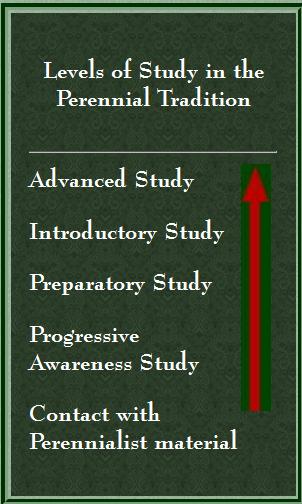 Reading and study can be understood as a type manifesting in all of life: we "read" and cognize our experience as it unfolds to us and we "study" and meditate on experience to gain understanding of it. Life, then, is an ongoing dialectical interchange between us and an unknown reality appearing, emerging, being released into existence. Persons working within the Perennial Tradition view all life experience as providing "learning material" which we are to "read" and "study" to gain understanding that becomes the basis for transformation of ourselves and our world.
Reading and study can be understood as a type manifesting in all of life: we "read" and cognize our experience as it unfolds to us and we "study" and meditate on experience to gain understanding of it. Life, then, is an ongoing dialectical interchange between us and an unknown reality appearing, emerging, being released into existence. Persons working within the Perennial Tradition view all life experience as providing "learning material" which we are to "read" and "study" to gain understanding that becomes the basis for transformation of ourselves and our world.Reading as dialectical interchange involves Higher Intelligence speaking to us through our experience of reading illuminating material and "reading" of our life-experience. The material expands our consciousness, allowing us to comprehend elements we had not understood before. This form of dialectic involves the material acting on our consciousness to produce new meanings and new awareness. Our consciousness interacts with the material to arrive at new concepts. The new understanding is a joint creation of a previously unknown reality--the meanings immanent in the material--and the ability we have previously gained in achieving deeper comprehension.
|
The primary manner in which the supersensible realm affects the terrestrial realm is the Divine creating and sustaining a world which provides precisely coordinated learning experiences transcendentally matched to our current needs and capabilities. The Divine has the power to take all human actions and thoughts and use them to assist us in our evolution. All persons receive exactly the experiences they deserve and from which they can best learn what they need for their personal evolution--and at the same time for the evolution of all humankind. The Divine does not create negative elements, those are created by human error and perfidy through the exercise of human freedom. |
We realize the newly created understanding is only partially the creation of our consciousness, because it is something we were previously unaware of--and grasp its meanings progressively through repeated subsequent readings. And it has the reality of a "message" expressed through us which we then can, if we attain the proper altitude of mind, "interpret" to others through precise thought and exact phrasing: expressing the new awareness in appropriate and cogent terms. It is the experience of a mystical uniting of separate realities or modalities into a common, creative manifestation.

The significance and importance of oral and written Perennialist teaching material and activity is the creation of new understanding on the part of the student. Instructional material is not produced for its own sake, merely to say that we have educational concepts and exercises. The sole purpose of Perennialist teaching material and procedures is to enable students to gain increased understanding, which allows for transformative interchange between the material, the teacher, and the student.
Participation in dialectical interchange 2 is possible in several different ways:
- Engaging in interpersonal interchange with other qualified persons who've carried out the necessary prerequisites

- Interpersonal Dialectical interchange via the Internet as a procedure within an introductory study program 3
- Dialectical interchange through meditation and contemplation
- Participation in inner dialectics
- Engaging in dialectic interchange as a constituent of being: communication with, reflection and action upon the terrestrial and spiritual domains in order to understand and transform ourselves and Reality
- Engagement 4 with transformative material through personal study and assimilation as delineated in this essay
|
"'How were the texts studied?'" "'By constant reading so that the different levels of meaning should be absorbed gradually. They were not read to be 'understood' as you understand the term but to be absorbed into the very texture of your conscious being and your inner self. In the west the intellectual teaches that you must understand a thing to profit from it. Sufi lore places no reliance upon such a clumsy thing as your superficial ability. The Baraka [spiritual energy] seeps in, often despite you, rather than being forced to wait upon the doorstep until your 'intellect' permits it to filter through in an attenuated form.'" |
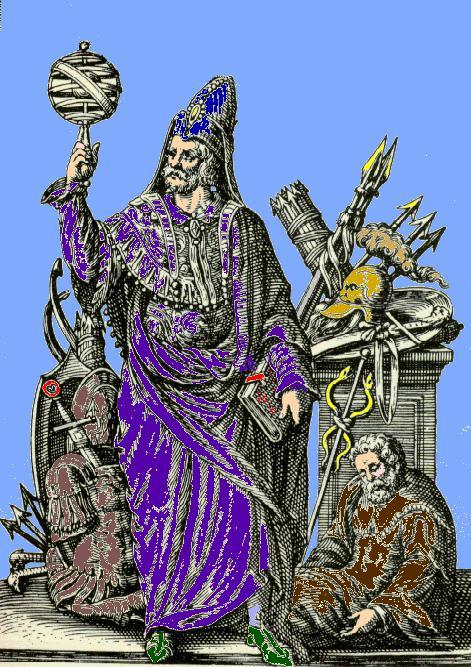 One of the earliest transmissions of the Perennial Tradition was
through the Hermetic Corpus. The composite figure of Hermes represents a force in the terrestrial realm which communicates divine meaning to humans. The image of Hermes is associated with the function of transmuting what is beyond ordinary human understanding into a mystical form that advanced human intelligence can understand and utilize for personal transformation.
One of the earliest transmissions of the Perennial Tradition was
through the Hermetic Corpus. The composite figure of Hermes represents a force in the terrestrial realm which communicates divine meaning to humans. The image of Hermes is associated with the function of transmuting what is beyond ordinary human understanding into a mystical form that advanced human intelligence can understand and utilize for personal transformation. The Wisdom Teachings tradition referred to the mystical element in transformative teaching material in relation to various levels of exegesis and interpretation:
- Peshat: Literal meaning; the contextual, philological level
- Remez: Allegorical meaning; cross-reference to other texts; rational or philosophical level
- Derash: Moral or homiletic meaning
- Sod: Mystical or anagogical 5 meaning
|
"There are three modes of human vision recorded by St Augustine; the first external, and belongs to the outward eye; the second that of imagination, by which representations are visible to the internal sense; the third is anagogic, and an intellectual sight, drawn above, by which intelligible species are beheld, as a pure infusion of light to the understanding. The first mode is familiar, the second has already been discussed; but this third vision of the light is in Elysium: where the eye of mind, no longer as heretofore looking from without inwardly, beholds its object through the atmosphere of the natural life; but contrariwise, having passed through this, purifying to the center, is converted and raised; and, as a Unit, now regards the circumference transitively, including it as an understanding or reflector, as it were, to the focus of her light." |
The initial letters of these four words form the acronym PaRDeS: transliterally interpreted as a walled garden or Paradise. Perennialist teachers refer to the wall around the garden as the "malbush" or "garments" of the text, concealing the esoteric meaning. One of the preeminent works of Sufi mystical poetry is that by Hakim Sanai entitled The Walled Garden of Truth.
"Words are embodiments of States, |
Perennialist teachers' occult knowledge enables them to encode veiled, multiple meanings and impacts in the material they produce. Dante pointed out that transcendent writings are polysemous--possessing multiple meanings and utilizing fables, imagery, emblems, and iconographic devices.
Perennialist teachers know precisely what kind of material will produce the desired effect on a particular type of student. They are aware of the extra-ordinary powers within certain types of instructional material or procedures. Select allegories or teaching stories are able to convey, in a subtle way, messages which could not be made clear through ordinary declaratory discourse. Teachers choose special teaching events that contain "impacts" capable of penetrating the conditioned responses of a student's mind, enabling, even obliging him to see aspects of himself and his world in an unexpected light.
|
|
|
There are five aspects in the development of transformative teaching material:
- Perennialist teachers opening themselves to inspiration from higher sources
- The teachers' selective envisioning of how to express concepts and orchestrate exercises
- The teachers' creation of the oral and written expressions of the inspired message
- Teachers' and advanced students' rediscovery, adaptation, and preservation of the human wealth of current and earlier teaching material
- The student's appreciative discernment and assimilation of the writings and procedures
|
"Appreciation is as definite a contribution to whole creation as any of the other qualities which seem to us the peculiar property of genius. Appreciation too works in the substance of thought, and therefore joins hands as co-worker with the original creative impulse." |
What we're exploring in this essay is the last of those aspects: appreciative discernment of inspired manifestations. In this instance we're examining how reflective study of Perennialist material unlocks the veiled meanings and effects which savants implant in their instructional writings.
We can refer to the first three aspects of the development of teaching material listed above as the work of a "receiving station." A person fulfilling this function must learn to allow the flow-through of inspiration that eventuates in a higher expression. The function we're investigating in this essay can be termed "conceiving station."
"The conceiving station must not only comprehend what is said, but he must on his own hook develop implications as they occur to his habit of mind, and report them back and discuss them. Many times these contributions are negatived or drastically modified by the communicator; in which case they are valuable as clearing misconception." 6
An effective "conceiving station" restates the concepts within the instructional material in his own terms, which indicates that he has fully comprehended what is being conveyed. Going beyond that, he is able to carry to conclusion premises only adumbrated in the teaching material.
The following example explains how interpreting words in an
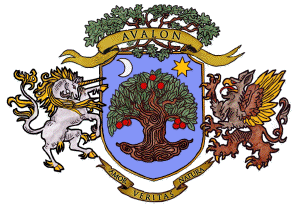 enlightened manner possesses a power in its own right. If a heedless student reads the word "emblem" and assumes it means merely "a badge or design that functions as a symbol," the potential force inherent in the word "emblem" is unrealized.
enlightened manner possesses a power in its own right. If a heedless student reads the word "emblem" and assumes it means merely "a badge or design that functions as a symbol," the potential force inherent in the word "emblem" is unrealized.An advanced student would interpret "emblem" to mean: "an allegorical picture often inscribed with a motto supplemental to the visual image with which it forms a single unit of meaning." The latter rendering of the word "emblem" is higher--more revelatory of transcendent meaning--than the first. Interested readers will find it beneficial to contemplate how a Perennialist teacher might so locate the word "emblem" or an emblem itself in an arcane context which would imbue the word or image with a higher, transformative signification.
"When we begin to look at the material of the hermetic tradition we are quickly struck by the elaborate and beautiful emblematic engravings especially from the late 16th and early 17th centuries, such as those of De Bry, Merian and others, illustrating the works of Robert Fludd, Michael Maier, Mylius, Khunrath, etc, which now seem almost mandatory for inclusion in today's popular books on the 'occult' and related themes.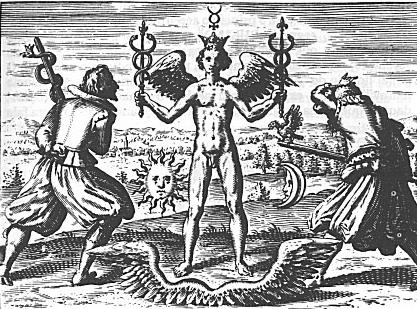 "Only rarely in such present day popular books are the symbolic contents of these emblems addressed by any meaningful or sensitive commentary, and they are all too often used merely as a form of decoration, or to pad out an otherwise inadequate text . . .
"Only rarely in such present day popular books are the symbolic contents of these emblems addressed by any meaningful or sensitive commentary, and they are all too often used merely as a form of decoration, or to pad out an otherwise inadequate text . . ."I believe these emblems are too important to be dismissed merely as fine examples of symbolic engravings. Indeed, if we work with them with any sensitivity, we will come to recognise that they possess a kind of inner life, a numinous quality. They are not merely symbolic keys to unlock the mysteries of hermeticism, but can be experienced as bearing a kind of living spiritual force that can still work in our souls today if we are prepared to contemplate them in the right way . . ." |
Study as an entrée to dialectical interchange involves developing appreciative discernment of the revelation of a higher, inspirational source in a particular manifestation. An inspired manifestation is only realized--made real, completed,
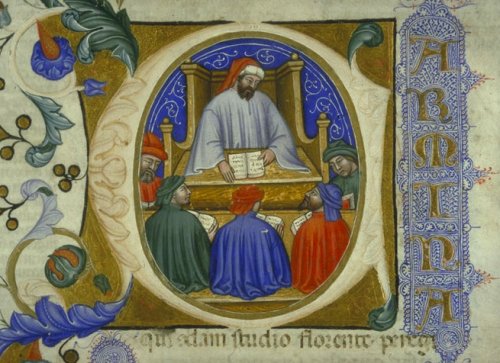 and brought to fruition--by appreciative, discerning recipients. Those recipients can include the teacher himself and readers or viewers of his creations. Transformative teaching material such as Boethius' The Emboldenment of Philosophy, for example, is only actualized and consummated by its being appreciated, understood, and applied by a discerning reader.
and brought to fruition--by appreciative, discerning recipients. Those recipients can include the teacher himself and readers or viewers of his creations. Transformative teaching material such as Boethius' The Emboldenment of Philosophy, for example, is only actualized and consummated by its being appreciated, understood, and applied by a discerning reader.A reader who merely passes over the words of such a book, without genuine comprehension, leaves the teaching in an unfinished state in regards to his own experience and to the actualization of the material. If the reader, out of egotism or scholastic puffery, injects spurious, extraneous meanings into the content, he creates a perversion of his own design totally unrelated to the real teaching which Boethius created. The essential teaching, containing multiple meanings, cascading associations, and profound metaphysical dimensions, is available to the appreciative, discerning reader who has prepared himself to discover what Boethius deposited in and transmitted through his inspired work.
|
"All in all, the creative act is not performed by the artist alone; the spectator brings the work in contact with the external world by deciphering and interpreting its inner qualifications and thus adds his contribution to the creative act. This becomes even more obvious when posterity gives its final verdict and sometimes rehabilitates forgotten artists."
|
All Perennialist teaching material utilizes the arcane anagogical faculty of
 language. Literature, architecture,
music, and art
cast in the anagogical mode have the power to lift up a person's actions, thoughts and feelings from worldly sense impressions to activate experiential participation in the spiritual realm. An anagogical experience is one that elevates the mind above the world of appearances to contemplation of the divine order.
language. Literature, architecture,
music, and art
cast in the anagogical mode have the power to lift up a person's actions, thoughts and feelings from worldly sense impressions to activate experiential participation in the spiritual realm. An anagogical experience is one that elevates the mind above the world of appearances to contemplation of the divine order.Through appropriate instruction, purposeful students learn to read and meditate on the inspired words of ancient sages such as Hermes, Plato, Jesus, Iamblicus, Plotinus, Tauler, and others to understand the reality of a Higher World of Ideas in which kindred souls commune. Jacob Boehme speaks of how the Higher Selves of the like-minded, whether near or far from each other, become "fellow-members, friends and relations."
To gain higher understanding, students must make assiduous effort to approach Perennialist material in an entirely new manner.
- A frame of mind which allows for the releasing of the material's intrinsic dynamic
- In the understanding that they are learning to activate a new faculty of discernment
Students must recognize that the special Perennialist material the teacher assigns requires exceptional study procedures which they must learn to follow in the correct manner.
- Contemplate how these ideas, concepts, and exercises were received by the Perennialist teacher as inspiration and intuition.
- Consider how the teacher would have had to organize the ideas, concepts, and exercises to produce the appropriate dynamic effect.
- Test to see if you're grasping the deeper meaning of the material:
- After reading and studying the material, explain in oral or written interchange with your teacher how you understand the material by re-phrasing its meaning and indicating what implications you judge it has.
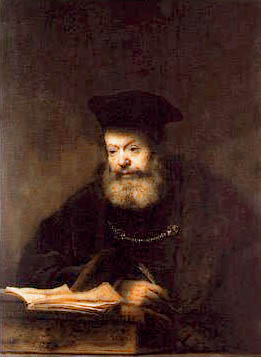
|
|
- Ask your teacher questions which arise in your study and assimilation of the material.
- The material you study suddenly or slowly begins to seem entirely new to you--as though you've never read it before or at least never understood it before. You begin to have "insight" into its real, deeper meaning.
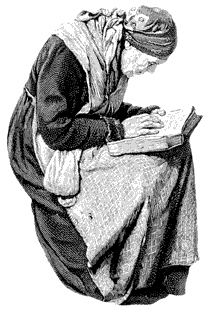
- You begin to understand what you should do: what specific material you need to continue reading and studying and what projects you need to carry out
- You begin to receive new ideas through inspiration or intuition.
- When re-reading a philosophical masterpiece, you experience it is an entirely new book. You can hardly believe that there is all this startling new meaning in a work you believed you had previously so thoroughly, so exhaustively mined. Of course, the newness is in your capability of comprehension which has evolved and expanded in the interim.
This is so much the case, that one test of your continuing spiritual growth is the new and enlarged meaning you uncover at each reading of a masterpiece. If a philosophical masterwork seems to have no new meaning, if it seems stale and lackluster, confined to meaning you had previously discovered, then there is likely some blockage present in your spiritual development.
- You'll begin recognizing areas of personal transformation taking place.
| Here is an illustrative animation that shows the difference between ordinary and anagogical transmission of meaning. |
We're examining a very unusual kind of study of a unique sort of material--not ordinary casual perusal of common content.
 Recently, there has sprung up a new academic area of controversy, with the usual so-called experts fighting toe to toe over totally inane concepts such as deconstructionism, post-totalitarian readers, new-criticism, functionalism, inscribed readers, and other species of meaningless jargon. Just to get a sense of the senselessness of this nonsense:
Recently, there has sprung up a new academic area of controversy, with the usual so-called experts fighting toe to toe over totally inane concepts such as deconstructionism, post-totalitarian readers, new-criticism, functionalism, inscribed readers, and other species of meaningless jargon. Just to get a sense of the senselessness of this nonsense:
"Experience is immediately compromised the moment you say anything about it." 7
Leaving this barren field to its scholastic jousting tournaments, we recollect that there has been a long-standing tradition in organized religions concerned with the reading and study of Scripture. Dogmatic religions teach that a true believer should read the received Scripture because it is perceived to be "the word of God." The disciple has the duty of reading the one holy, sacrosanct, unquestionable Truth--to learn what he is to believe and do. He is not to question what the Scripture says, just memorize and follow its dictates submissively and mindlessly. In regressive, conventionalized religions, penitents are often discouraged from reading the scriptures for themselves, forced merely to accept the "interpretations" of religious autocrats.
While some Perennialist savants have found inspiration in orthodox scriptures, most have focused their studies on the extensive material created by Perennialist sages for their own times and needs. Many of these Perennialist masterpieces have become the literary foundation of their respective cultures, as in Persia. A few rather more broad-minded Christian contemplatives such as Isaac of Nineveh, an East Syrian writer of the seventh century, held that the reading of Scripture is not so much study of the Biblical text for cognitive purposes, but rather as a means for direct converse and mystical encounter with God and insight into the depths of the divine reality. Isaac spoke of the reading of Scripture as the primary means of spiritual transformation.
However, most reading of scripture within orthodox religions has been merely for the purpose of propagandizing and conditioning penitents, with any questionable heretical books promptly tossed on the burning pyres or listed on the index of books forbidden to read.
|
When the teacher had the students read the material in the book aloud to the class and then explain it, one girl slammed down her
book. "We're not supposed to be able to read this rubbish and understand it." she shouted. "It's your job to teach it to us!" "Listen," the teacher replied, as calmly as she could manage, "Within a year you will be sitting alone in a study bedroom in some college, and in the room with you will be a pile of books." She paused while the class contemplated this very real possibility. "There will be no one else in the room. Unless by then you can open books and read them, with understanding, you might as well not attend college." Understanding is the capability of explaining concepts and activities to yourself. It is aided by explaining to others and studying your own explanation. Explanation refers to a product as well as a process. |
Perennialist teaching material possesses the dynamic of enabling diligent students to attain understanding of what elements in their own intellectual and moral makeup are effective or ineffective.
 Transformative material has the nature of a philosophical Rorschach test: it reveals the quality and character of the reader or student. Perennialist teachings constitute a fathomless depth into which unmindful persons can put their own misconceptions, dogmas, prejudices, and rationalizations. Responses to transformative material, then, tell us primarily about the student, not the teachings.
Transformative material has the nature of a philosophical Rorschach test: it reveals the quality and character of the reader or student. Perennialist teachings constitute a fathomless depth into which unmindful persons can put their own misconceptions, dogmas, prejudices, and rationalizations. Responses to transformative material, then, tell us primarily about the student, not the teachings.Most persons approach Perennialist material with debilitating personal qualities and tendencies, making it impossible for them to study effectively or make necessary changes in their character. The most enervating aspect of their personalities is usually egomania, coupled with an inability to see their own faults and a lack of desire to become aware of their defects.
|
"To ask of the teacher: 'Give me your higher knowledge, but leave me my customary emotions, feelings, and thoughts,' would be an impossible demand. In this case the gratification of curiosity and desire for knowledge would be the only motive. When pursued in such a spirit, however, higher knowledge can never be attained." |
You must be able and willing to examine yourself and correct personality defects if you're to succeed in the study of Perennialist material. This is something which you must initially do primarily on your own, because if a teacher has to continually point out your deficiencies, it indicates that you aren't serious about self-study or self-improvement.
We must avoid plunging heedlessly and precipitately into studying Perennialist material, assuming that a superficial reading of the words will provide insight. Approaching each teaching element with the necessary sense of respect and anticipation, we learn to activate the special dynamic the Perennialist savant created within her material to allow for specific transformative effects in the reader.
 As we practice the search for and love of deeper wisdom, we begin to get a sense that reading and studying Perennialist material involves a definite interchange between ourselves, the teachings, the study situation, and the larger Unitary Reality. First, we find that just the right material comes into our purview at the right time, containing precisely what we need for our learning relative to our present level of understanding and activity.
As we practice the search for and love of deeper wisdom, we begin to get a sense that reading and studying Perennialist material involves a definite interchange between ourselves, the teachings, the study situation, and the larger Unitary Reality. First, we find that just the right material comes into our purview at the right time, containing precisely what we need for our learning relative to our present level of understanding and activity.We begin to get a sense that the dialectic interchange resulting from assiduous study involves a different kind of experience than merely reading an essay or a book in a heedless manner, simply to pass the time. Those who cannot commit to the prerequisites for this kind of study waste the dynamic of the interchange--and waste their own time as well. Dialectical interchange through thoughtful reading requires new kinds of responses and initiatives: not just perusing the material, but thinking, reflecting, contemplating, focusing on what one is feeling, and evaluating one's responses and reactions.
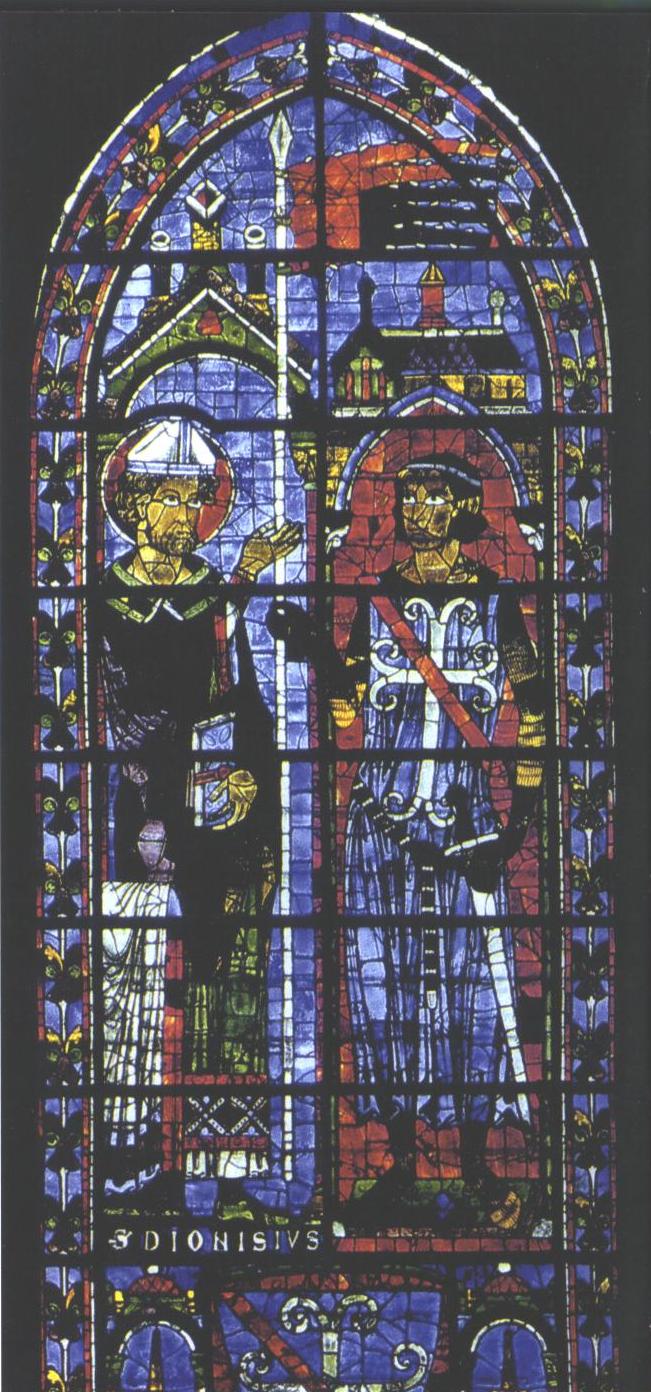 As you read and study in this manner, you learn to interact with the ideas and meanings of the instructional material, gaining new understanding of concepts and processes, placing that fresh comprehension back into the context of the material to
allow it to produce yet additional insights, in a constantly ongoing process of interchange. You discover that the surpassing forces within Perennialist teaching material create playful coruscations of luminosity that seem to bear within them the seeds of their own transcendence.
As you read and study in this manner, you learn to interact with the ideas and meanings of the instructional material, gaining new understanding of concepts and processes, placing that fresh comprehension back into the context of the material to
allow it to produce yet additional insights, in a constantly ongoing process of interchange. You discover that the surpassing forces within Perennialist teaching material create playful coruscations of luminosity that seem to bear within them the seeds of their own transcendence.The linguistic and artistic elements within Perennialist teaching material strain against their conceptual bounds; the anagogical forces overpower the ordinary meanings, allowing us to ascend to an actual participation in a divine Beyond. The evocative and transformative power of the material far outstrips the merely informative capacity and we move into higher realms of meaning and effect.
Our highest realization comes with the awareness that Perennialist material is a divine bestowal. In his Ion, Plato made it clear that artists and savants receive their ideas and meanings from the Higher Realm.
| ". . . God takes their ordinary state of consciousness from artists and savants when he communicates through them, as He does with prophets and diviners, so that we who hear should know they are not the ones who speak those verses that are of such high value . . . that God himself is the one who speaks through them to us." |
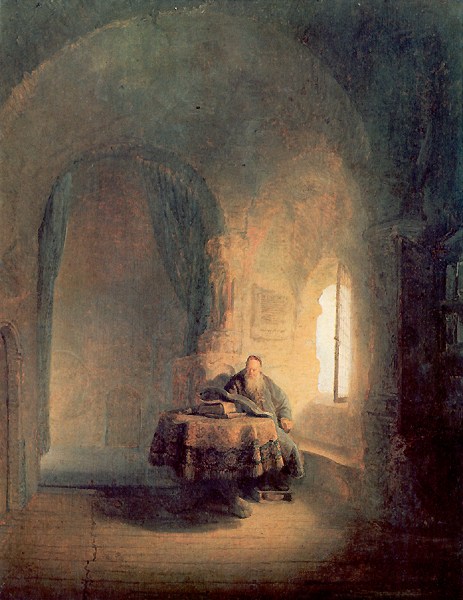
Notes:
1 "I acknowledge also that there are germs scattered in this work the properties of which I knew not when I sowed them, and which open to me daily, thanks to the aid of Providence and our authors." This is a passage from the Theosophic Correspondence between Saint-Martin and Kirchberger, in which Saint-Martin indicates that meanings in his book L'Homme de Desir grew in significance for him as he later discerned them.
2 Dialectical interchange: A shared mystical experience; entering into the dialectical frame of mind, participants in interpersonal dialectical interchange enter a higher state of consciousness, allowing psychic material to flow through them; they fly by the seat of their pants; they don't follow a script; they gain union with their Higher Self and create new understanding by the interaction and coalescence of ideas from all active participants in the interchange.
3 Dialectical interchange is, among other things, an instructional and screening process within the Perennial Tradition preparatory study program. This procedure can appropriately be made available only to those who have completed the preparatory phase, have applied for acceptance to the introductory program, and have been provisionally admitted to that instructional and screening procedure. The clearest analogy we can make is to liken this process to the instructional procedure for naval special forces when they're trained to live and breathe under water with special equipment. Dialectical interchange is, similarly, preparation for living in an entirely different "atmosphere" than ordinary consciousness by learning to use "special faculties." It would not be advisable for persons to participate in this instructional procedure unless they were engaged in the entire study program. Dialectical interchange, by itself, without prior and ongoing instruction in other critical areas, either eventuates in merely a screening-out incident (the student demonstrating that he is incapable of introductory study) or embroils the person in areas of potential danger
4 Engage: to involve oneself or become occupied with; participate; to interlock or cause to interlock; to pledge or promise; to attract and hold the attention of; to draw into
5 Anagogical: from the Greek anagein: to lift up; the word denotes any entity or experience through which a prepared person's actions, thoughts and feelings are lifted up from worldly sensations to realize an experiential participation in the spiritual realm. The aspirant must possess the correct respect for Higher Knowledge for this phenomenon to occur.
6 Stewart Edward White, The Unobstructed Universe, 1940, p. 62
7 This particular bit of inanity comes from the pen of Stanley Fish in his essay "Literature in the Reader: Affective Stylistics," New Literary History,123-62, 1970